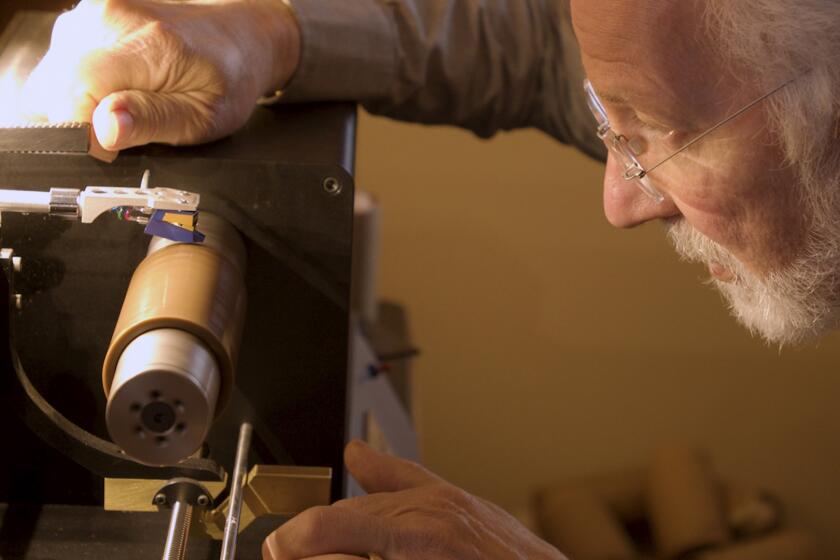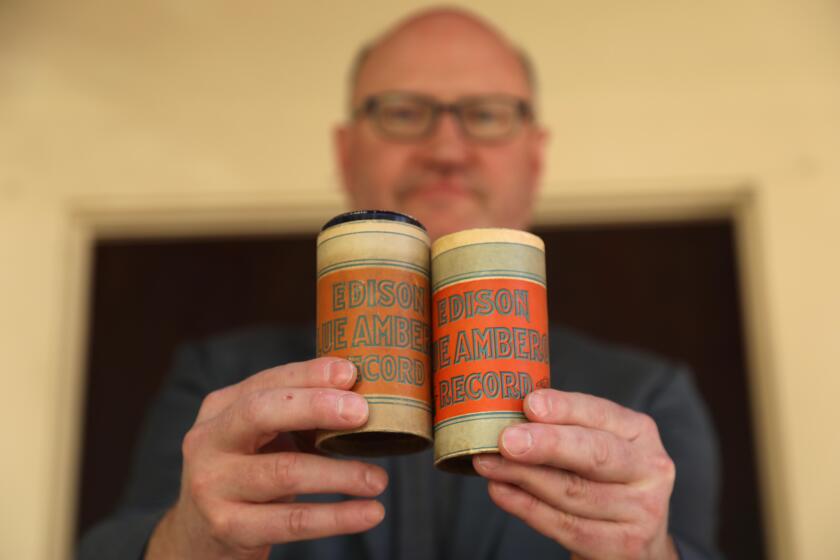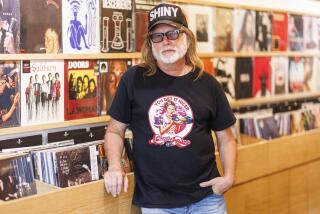L.A.’s evolution as a music powerhouse may have started earlier than we think
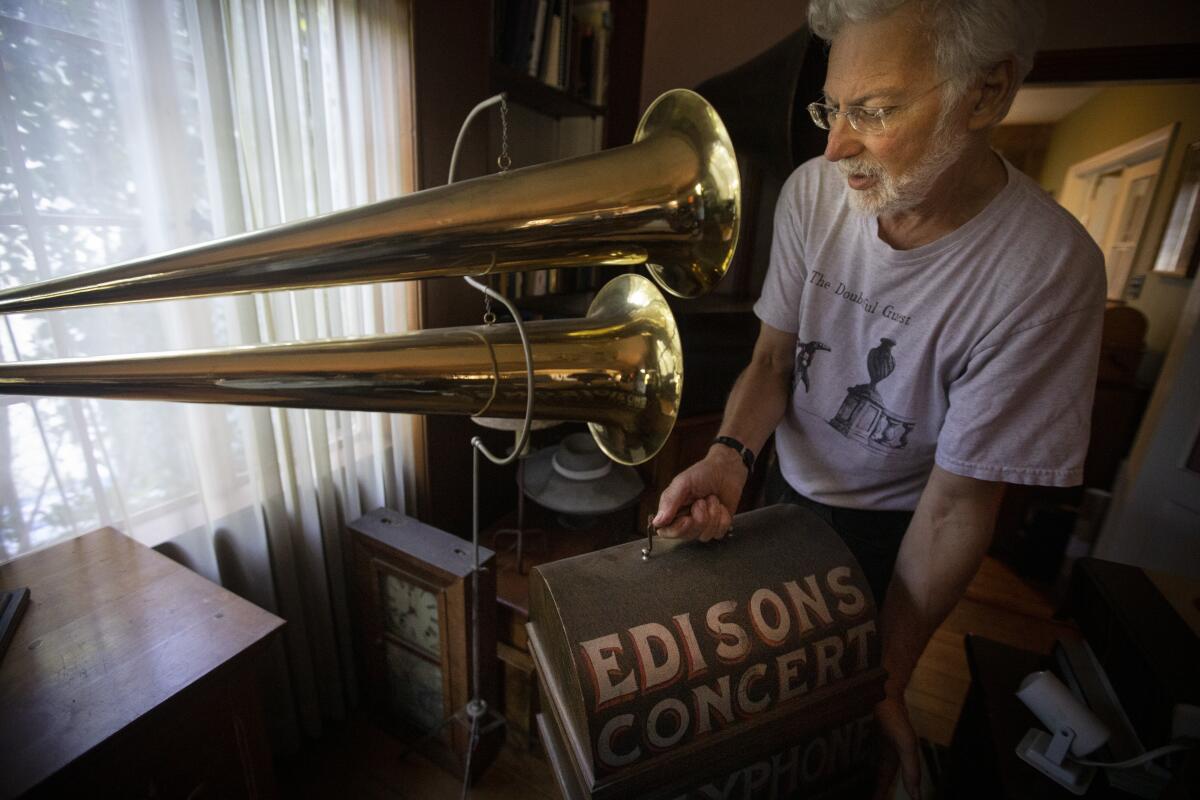
Not long ago, Silver Lake-based early-music collector John Levin was contacted by a seller in the Midwest who’d come across a box containing two unmarked brown wax cylinders and a few other items. Levin bought the lot of it.
On one of the cylinders, a voice introduces “The Ambassador March” as performed by E.R. Brown’s Orchestra. On the other, the same voice introduces a recording of a banjoist performing an expert version of “Yankee Doodle.”
“Banjo solo, ‘Yankee Doodle with Original Variations,’ played by Mr. Fred Kimball for the Los Angeles Phonograph Company of Los Angeles, California,” the announcer says. There’s a pause, followed by a single key-setting banjo chord.
Kimball’s playing on “Yankee Doodle” is at first loose and unpracticed. Notes bend and wobble. Then, as if flipping a switch, his fingers start chugging. The amateurism is a ruse. Across the rest of its two minutes, Kimball uses the janky-sounding banjo’s weaknesses to highlight just how good of a player he is.
And that ringing strum just might be the Big Bang of the Los Angeles recorded music industry. If it’s what experts believe it to be, the 4-inch cylinder, made of a metallic soap compound but commonly referred to as wax, plants a new historical marker in the city’s evolution as a commercial music powerhouse.
It turns out that Levin’s serendipitous purchase may have allowed him to pinpoint the existence of Los Angeles’ first record company.
The area’s first record label has long been believed to be the Santa Monica-based 78-rpm imprint Nordskog Records, which was founded in 1921. But the announcer who introduces “Yankee Doodle” suggests an earlier company. And there are a few other hints about its existence as well: In the Sept. 26, 1893, issue of the Los Angeles Herald, a brief notice appeared next to an ad for “the best and most healthful beverage in the market … Pabst beer.” It read, “The Los Angeles Phonograph Parlors will furnish a phonograph to record and at once reproduce some of the numbers of the Epworth Cadet Band.”
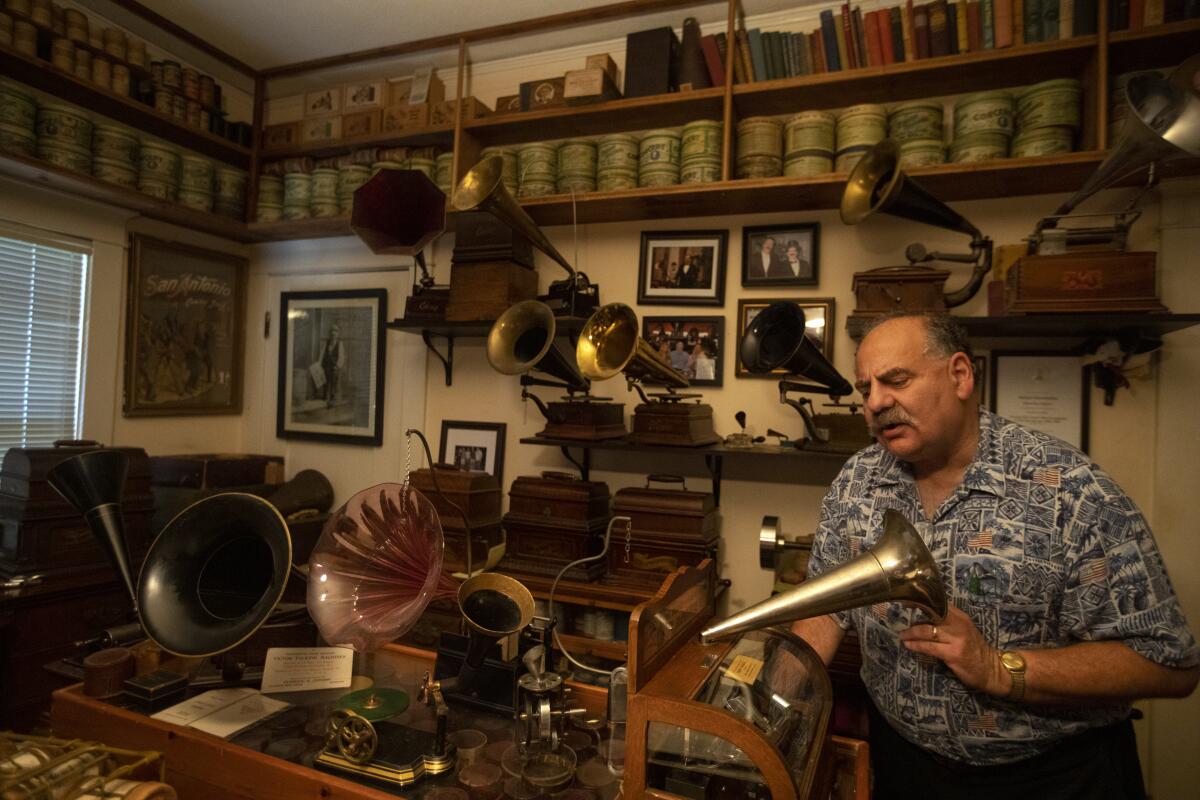
Owned by a former Texan named Thomas Tally and his brothers, the parlors hawked Thomas Edison’s phonograph at locations in Santa Monica and downtown Los Angeles. The business allowed customers to access entertainment — music, speeches and, eventually, brief kinetoscope movies — for a nickel a spin. (One location made so much musical noise that neighbors demanded an ordinance to muffle the shop.)
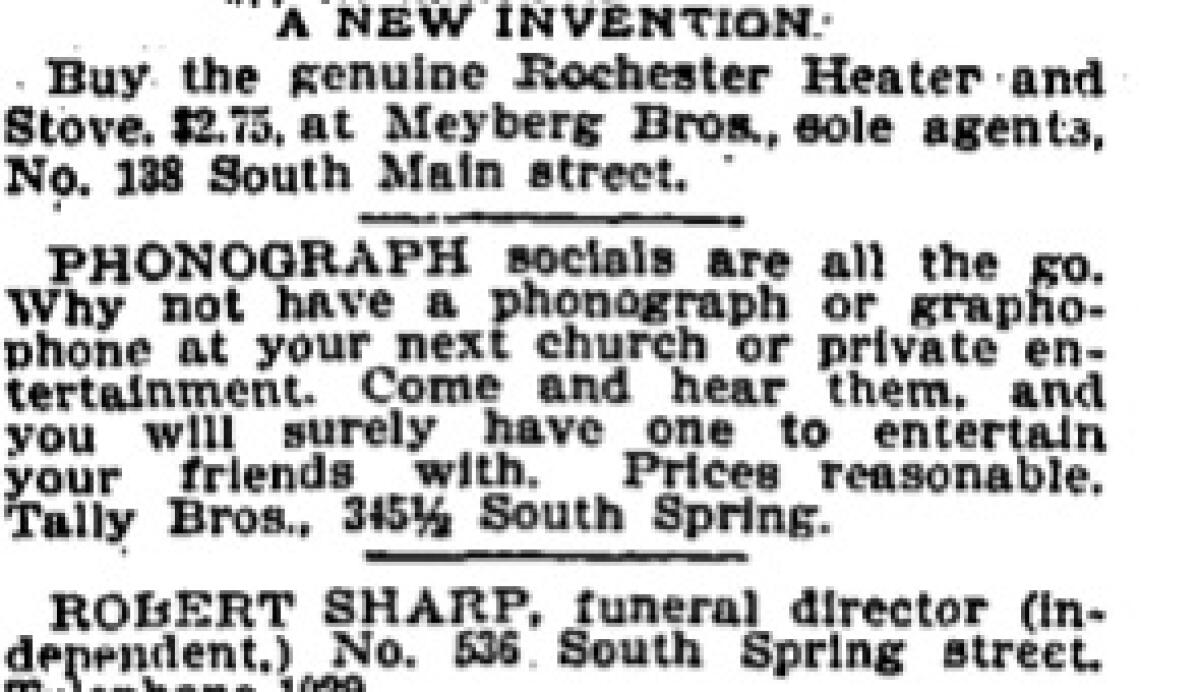
During the rest of 1893, the Tally Bros. Phonograph Parlors placed a series of ads in local papers that hyped the phonograph’s potential. It promoted listening demonstrations at nearby churches — arguably Southern California’s first DJ sets.
Likely recorded between 1896 and 1901, the two wax cylinders in Levin’s box, along with a one-line listing in an 1893 Los Angeles City Guide, seem to be the only proof — so far — that the Tally Bros. Phonograph Parlors recorded and marketed its own records or used them in their own parlor players.
Nonetheless, this is the stuff cylinder geeks live for.

Wax cylinder expert John Levin.
Those who trade in LPs and compact discs have it easy, relatively speaking: They can search collector sites Discogs and Popsike for data. “But what’s the Wild West? What is something that nobody knows much about? It’s this so-called brown wax era that predates manufactured media,” says Levin.
“Bravo,” wrote Levin’s cylinder-collecting friend, Dr. Michael Khanchalian, in an email after hearing the news. “We never knew Tally’s was doing business as the Los Angeles Phonograph Company back that early, or at any time for that matter!”
A tiny tribe of passionate collectors has dedicated itself to preserving early musical recordings on wax cylinders.
David Seubert, who oversees the wax cylinder archive at UC Santa Barbara, said that it’s common knowledge that Edison had record companies in Washington, D.C., New Jersey, Chicago, New Orleans, San Francisco and elsewhere. “But I’ve never heard of any in Los Angeles. Everyone has just assumed that Nordskog was the first company to set up shop in L.A. in the early 1920s, and the history has just been rewritten back 20-some years,” he said.
If authentic, the discovery marks the start of an industry in Los Angeles that across the decades has generated billions of dollars and launched countless careers.
But how did Kimball and E.R. Brown come to be, perhaps, the earliest-known recording artists in Los Angeles?
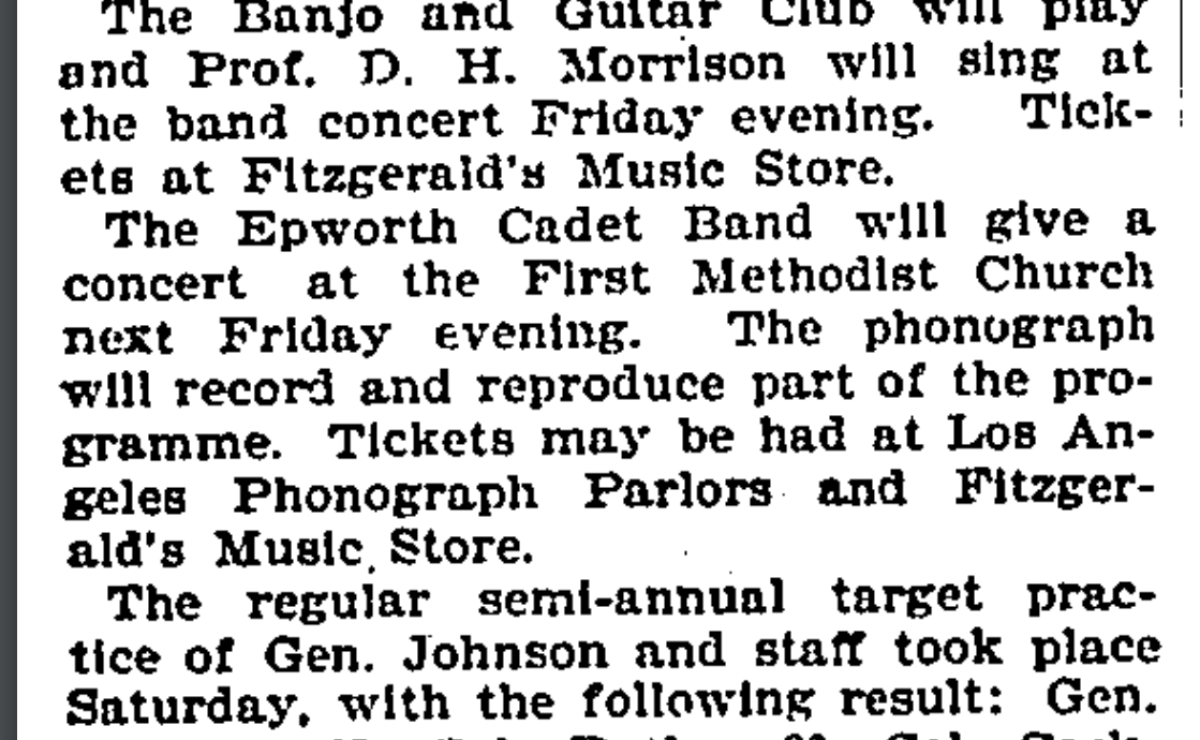
Much of the budding record business occurred on the other side of the country in New York and New Jersey, says David Giovanonni, Grammy-winning co-producer of the Archeophone Records anthology “Lost Sounds: Blacks and the Birth of the Recording Industry, 1891-1922.” “That far away, they did record local talent at many of the local companies and this is what, all indications are, you’re hearing.”
Giovanonni noted that he has learned to question any claims involving cylinders because they’re easy to fake. “All you need is a brown cylinder, a shaver to erase old grooves and period recording equipment. Leave it outside for a couple months and it looks just like it came from 1892.” He stresses that he has no reason to doubt the authenticity of Levin’s cylinders, adding that if the evidence checks out, “To my knowledge, these would be the only L.A. Phonograph Co. recordings known to exist.”
Pausing, he goes one step further. “You’ve got the earliest extant retrievable sound made on the West Coast — let alone L.A.”
Brown’s Orchestra played throughout the region. A resident of Long Beach, the violin-playing band leader operated a musical instrument store out of a relative’s grocery. His outfit was a regular send-off band at Long Beach cruise docks. A gig in October 1896, according to the L.A. Herald, drew 400 people to a hall in downtown Los Angeles located at 245 S. Spring St. At the time, one of the Tally Bros. parlors was located inside the Ramona Hotel at the corner of Third and Spring streets.
The treasures in UCSB’s Cylinder Audio Archive include recordings of string quartets, spirituals, whistling songs, sermons and politicians who might have been startled to hear the sound of their own voices.
That’s a half-block away. Maybe a company rep was in the crowd and pitched Brown and band a deal? Who knows.
And what of the banjoist?
After listening to a copy of the cylinder, recording artist, scholar and expert banjo player Dom Flemons quickly identified the arrangement. “That comes from a banjo instructor from 1865, from a fellow named John Briggs,” said Flemons, explaining that the teacher authored a widely distributed book on how to play the banjo. “That was the first way people learned outside of learning directly from someone.”
Kimball himself remains a mystery for now. But, as the resurrected recording attests, he sure can play.
More to Read
The biggest entertainment stories
Get our big stories about Hollywood, film, television, music, arts, culture and more right in your inbox as soon as they publish.
You may occasionally receive promotional content from the Los Angeles Times.
